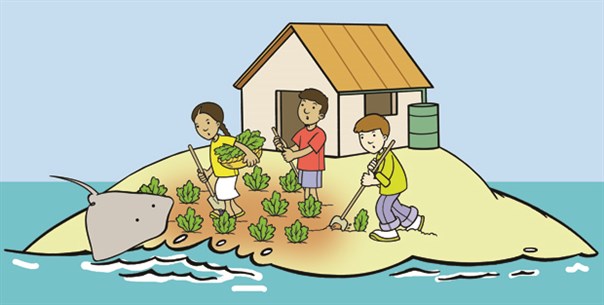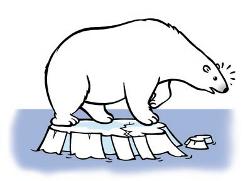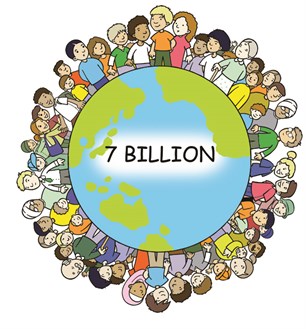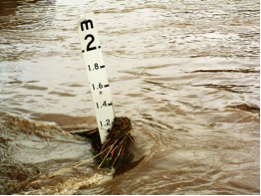Diary Chapters
Whats the story
We have a wonderful planet.
Let's protect it!

EVERYTHING IS CONNECTED
Planet Earth is an amazing place with the capacity to sustain
the life of millions of species. Some of these species are still a
mystery to us - they're waiting to be discovered by keen scientists
like yourself!
There is one thing that is definitely NOT a mystery to us
anymore - everything on Earth is interconnected. It's like we're
all joined together by invisible threads, just like a spider's web.
There is a special Indigenous Australian word to describe this
connection - Kanyini. It means taking
responsibility and caring for all things.
With more and more of us sharing this precious place we need to
find ways of preserving it. Don't forget that YOU can make a
difference - start asking questions and inspire your friends and
family to make small steps in the right direction. Simple ideas are
often the best!
Organisations like Tulele Peisa are working hard to
relocate families and their homes under threat from rising sea
levels.
- Find out which countries are affected by sea level rise
- Write a letter to your local newspaper asking them to publish
an article about how sea level rise can affect families and their
homes
The longest living things on earth are trees, growing for
hundreds of years!
Try this fun game.
Agel Kowan, St Brendan's Primary,
Moorooka
Agel showed exemplary individual action in her daily
life keeping a detailed record in her Green Lane Diary, researching
areas of interest and trying to change her family's behavior. Her
practical ideas shared in her diary show prove that everyone can
make a little difference every day.
- Start a blog and upload photos of your actions
to save our planet. Share your blog with your class, your school
and the local newspaper!
- Do you have a temperature gauge at school? Why not start
keeping a record at school? Explore the Bureau of
Meteorology website. It's fascinating stuff!
- Do you like playing games online? You should start doing it on
this website because for every 1000 games, they plant a tree! Over
1000 trees have already been planted, check it out here!
THERE'S A STINGRAY IN MY VEGE PATCH!
For people living in coastal areas rising sea levels can
threaten their families, homes and crops. As seawater makes its way
over the beach and across the land, the soil on the small Pacific
Islands of Carteret, Tuvalu and Kiribati becomes more salty,
making it harder to grow crops. One by one, the families of these
tiny islands may need to move somewhere else.

What do you think we can do to help?
ONLY A FEW DEGREES…
Data collected over the years has shown a gradual
increase in temperatures and even though the change is less than 1
degree celsius since 1950, the impact on our planet's ecosystems is
far from tiny. Rising temperatures and changing patterns of
rainfall will not only impact on people, but also on plants and
animals. Some habitats may be affected such as the icy homes of
polar bears and penguins. Find out more.
Stuff to Check Out
WHAT NEXT?
2014 is the International Year of the Farming Family, the
objective is the raise the profile of family farming and
smallholder farming by focusing the worlds attention on its very
significant role in eradicating hunger and poverty, providing food
security and nutrition, improving livelihoods, managing natural
resources, protecting the environment, and achieving sustainable
development, in particular in rural areas.
The goal of the 2014 IYFF is to reposition family farming at the
centre of agricultural, environmental and social policies in the
national agendas by identifying gaps and opportunities to promote a
shift towards a more equal and balanced development.
What are some ways we can support family farmers?
Do you know any farming families? Maybe you are a farming
family!
Check out where your food comes from to make its way onto
supermarket shelves
Ask your family if you can plant a couple edible plants, like
herbs or pumpkins (depending on your space)
IT'S ALL
HAPPENING!
In June 2012, leaders from all over the world travelled to Rio de
Janeiro, Brazil to attend the United Nations Conference on
Sustainable Development (UNCSD), also called the 'Earth
Summit'.
They discussed how to protect our
society, our environment and our economy so that present and future
generations can thrive. Conversations covered lots of different
topics including food and water shortages, energy, oceans, jobs,
natural disasters and sustainable cities.
This conference was a 20-year
follow-up to the historic 1992 United Nations Conference on
Environment and Development, the first 'Earth Summit', where
environmentalist David Suzuki's amazing daughter made a brilliant
speech. Watch it here!
7 BILLION AND COUNTING

Have you ever calculated your 'Ecological
Footprint'?
In simple terms, it's a way to calculate how many resources you
need to live your current lifestyle. After adding up things you use
such as the food you eat, fuel to get to school, energy to power
your home, the end result could be anything from 2 to 7 planets
worth of resources!
The problem is WE ONLY HAVE ONE PLANET and we need to make sure
to use its resources in a sustainable way. There are already more
than 7 billion people (that's 7,000,000,000!!!) living on our
planet, and scientists project this number to grow to 9 billion by
2050! Planet Earth is truly amazing, but its resources can only be
stretched so far. Some organisations like Sustainable
Population Australia are seeking solutions and ideas
to manage the population growth in a more sustainable way.
Want to learn about how fast the global population is increasing
and how it is affecting the planet? Watch this!
Some people in the world live really well - and their Ecological
Footprint is very small. Think about the changes you could make to
help 'even out' the balance of resources used across the
planet.
Use this calculator to find out what your
Ecological Footprint is!
 DISASTER ZONE!
DISASTER ZONE!
2011 was a year that many of us would rather forget.
Many
parts of the world were hit by floods, earthquakes,
cyclones,
bushfires, tsunamis and volcanoes and even a year after the
disasters, many people are still unable to return to their
homes.
The good news is that there are many people working together
to rebuild communities and make them stronger for the future.
Learn about emergency situations to know what to do here.